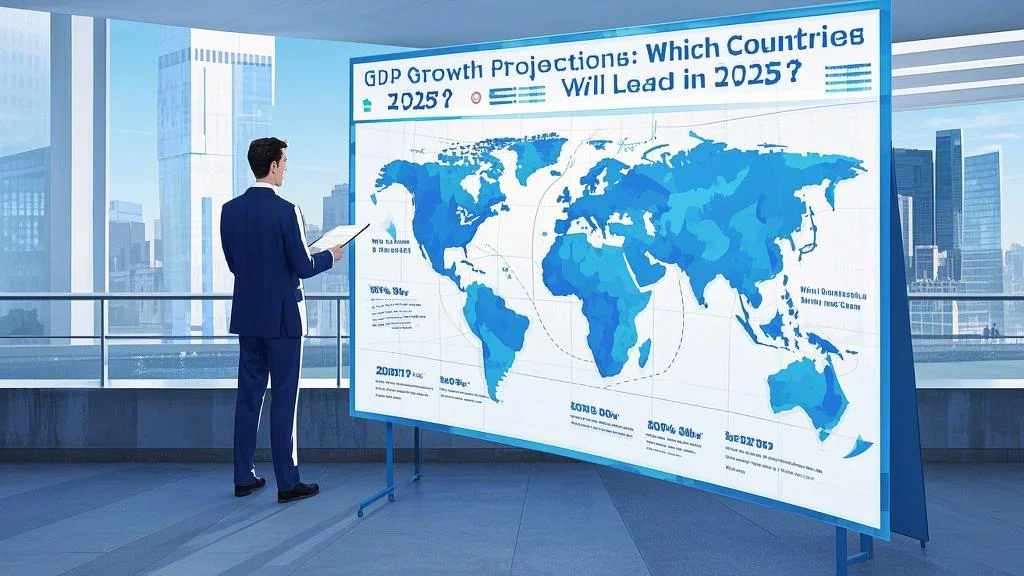Analyzing GDP Growth Projections for 2025
As we look towards 2025, understanding GDP growth projections has become increasingly important for investors, policymakers, and business leaders. The global economic landscape is expected to undergo significant changes, with certain countries and regions poised to lead in economic expansion. By examining key economic indicators, we can gain valuable insights into which nations are likely to experience robust growth and why. This analysis is particularly crucial in the context of shifting global dynamics and emerging economic trends.
One of the most significant factors influencing future GDP growth is the performance of emerging markets. These economies, characterized by rapid industrialization and increasing integration into the global economy, are expected to play a crucial role in driving worldwide economic expansion. However, the growth trajectories of these markets can vary significantly, influenced by factors such as political stability, infrastructure development, and access to international capital.
Economic Indicators Shaping Future Growth
To understand which countries are likely to lead in GDP growth in 2025, it's essential to examine various economic indicators. These metrics provide valuable insights into the health and potential of national economies. Key indicators include productivity growth rates, investment levels, demographic trends, and technological adoption rates. By analyzing these factors, we can identify which countries are best positioned for strong economic performance in the coming years.
The relationship between these indicators and future growth is complex and often influenced by broader global trends. For instance, countries with strong technological sectors and high levels of innovation are likely to experience faster productivity growth, which can drive overall economic expansion. Similarly, nations with favorable demographic profiles, such as growing working-age populations, may have an advantage in achieving sustained GDP growth.

The Role of Emerging Markets in Global Growth
Emerging markets are expected to play a crucial role in shaping the global economic landscape in 2025. These economies, which include countries in Asia, Africa, and Latin America, are characterized by rapid industrialization, increasing consumer spending, and growing integration into the global economy. Many of these nations are expected to experience above-average GDP growth rates, driven by factors such as infrastructure development, technological adoption, and favorable demographic trends.
However, the growth trajectories of these markets can vary significantly, influenced by factors such as political stability, access to international capital, and the ability to attract foreign investment. Understanding these dynamics is crucial for investors and businesses looking to capitalize on the growth potential of these economies. The performance of emerging markets will also have significant implications for global trade patterns and the overall health of the world economy.
Global Trade Dynamics and Economic Growth
The future of global trade is expected to play a significant role in shaping GDP growth projections for 2025. As countries become increasingly interconnected through trade networks, the performance of individual economies is more closely tied to global economic conditions. This interconnectedness creates both opportunities and challenges for nations looking to achieve strong economic growth.
One of the key trends shaping future global trade is the increasing importance of regional trade agreements and economic partnerships. These agreements can provide participating countries with access to larger markets, increased investment opportunities, and enhanced economic cooperation. Understanding these trade dynamics is crucial for predicting which countries are likely to experience strong economic growth in the coming years.
International Finance and Economic Development
The role of international finance in shaping economic development and GDP growth cannot be overstated. Access to international capital markets, foreign direct investment, and development financing are crucial factors in determining a country's economic trajectory. In 2025, we can expect to see continued competition among nations to attract international investment and financing, with significant implications for economic growth.
Countries that can effectively leverage international finance opportunities are likely to experience stronger economic growth. This includes not only attracting foreign investment but also developing robust financial systems that can support economic expansion. The ability to access international capital markets and manage financial risks will be crucial factors in determining which countries lead in economic growth in 2025.
Predicting the Economic Leaders of 2025
Based on current trends and analysis of key economic indicators, several countries are well-positioned to lead in GDP growth in 2025. These nations typically share certain characteristics, such as strong technological sectors, favorable demographic profiles, and effective integration into global trade networks. Additionally, their ability to attract international finance and investment plays a crucial role in their economic prospects.
While predicting economic performance several years in advance is inherently uncertain, understanding the factors that drive economic growth can provide valuable insights. By analyzing trends in emerging markets, global trade patterns, and international finance, we can identify which countries are likely to experience strong economic growth in 2025. This information is crucial for investors, policymakers, and business leaders looking to navigate the evolving global economic landscape.
